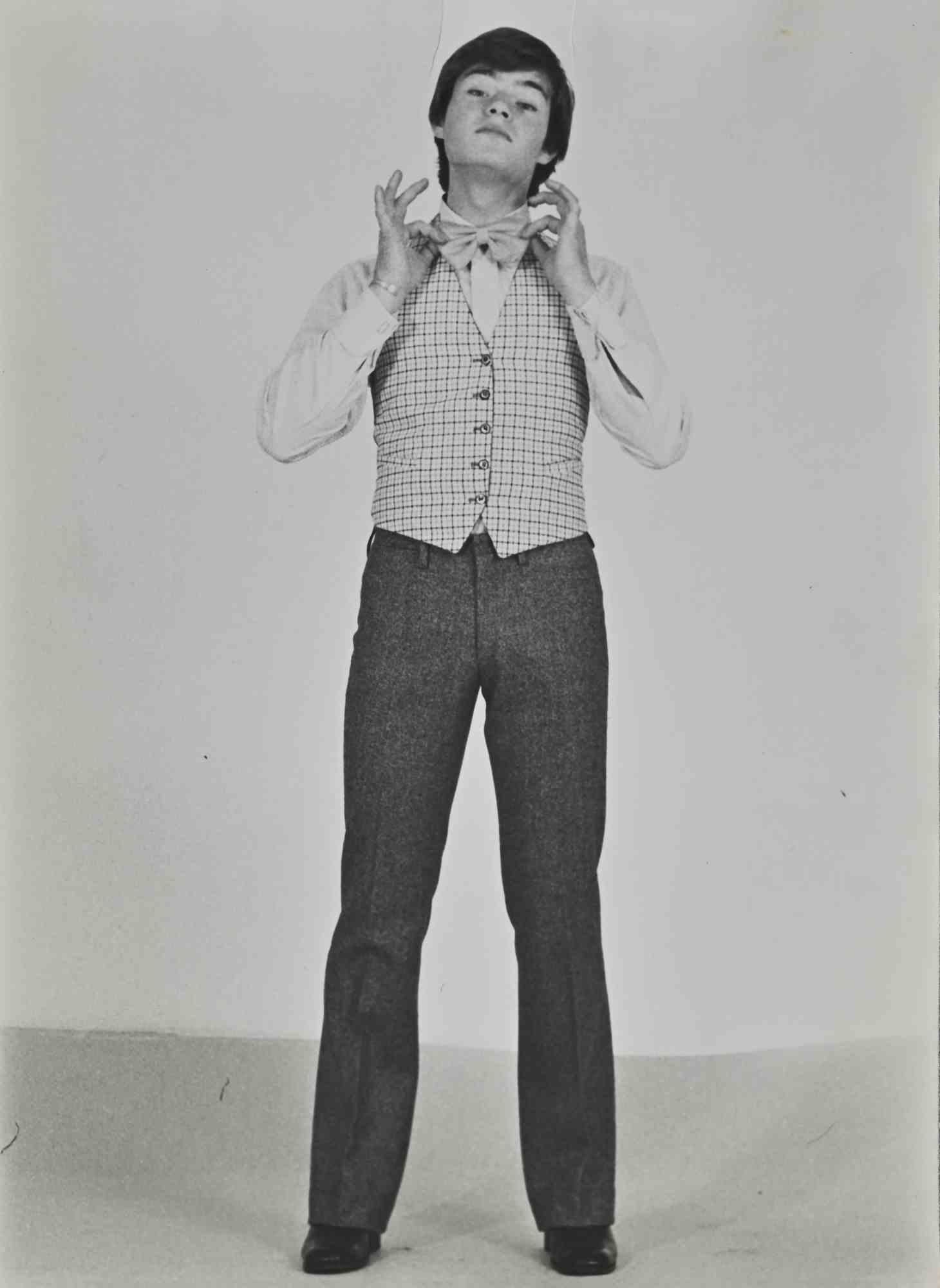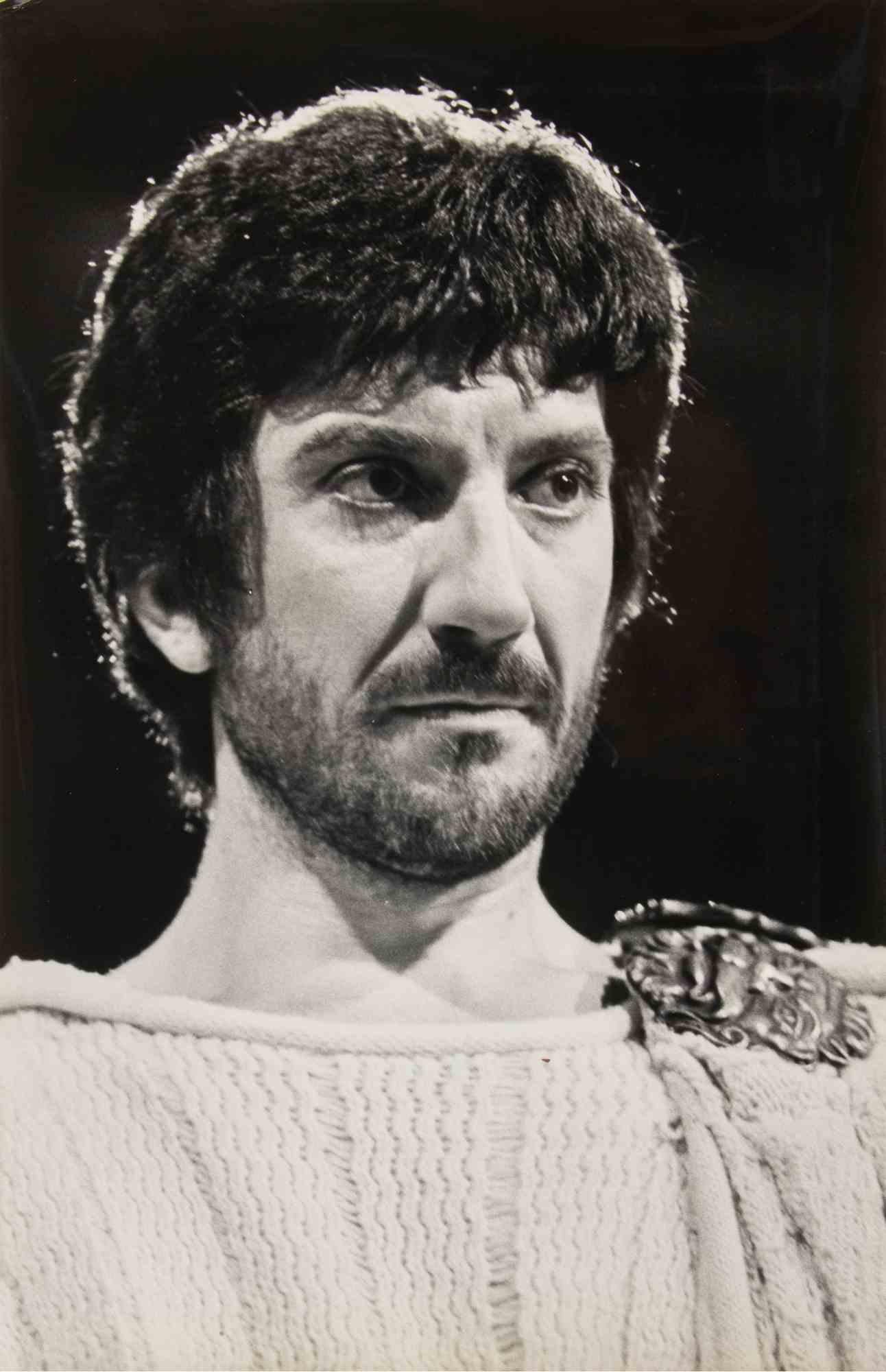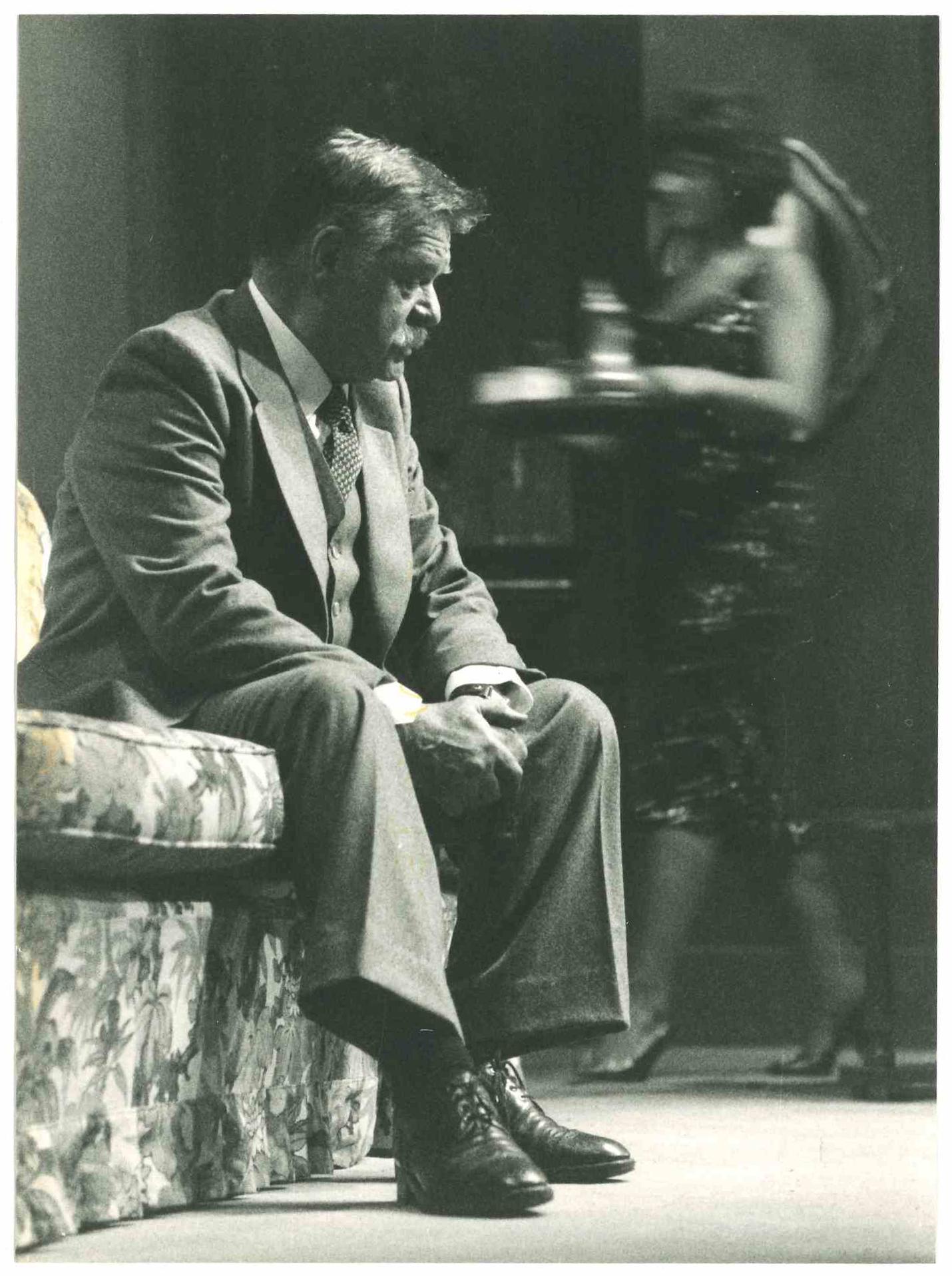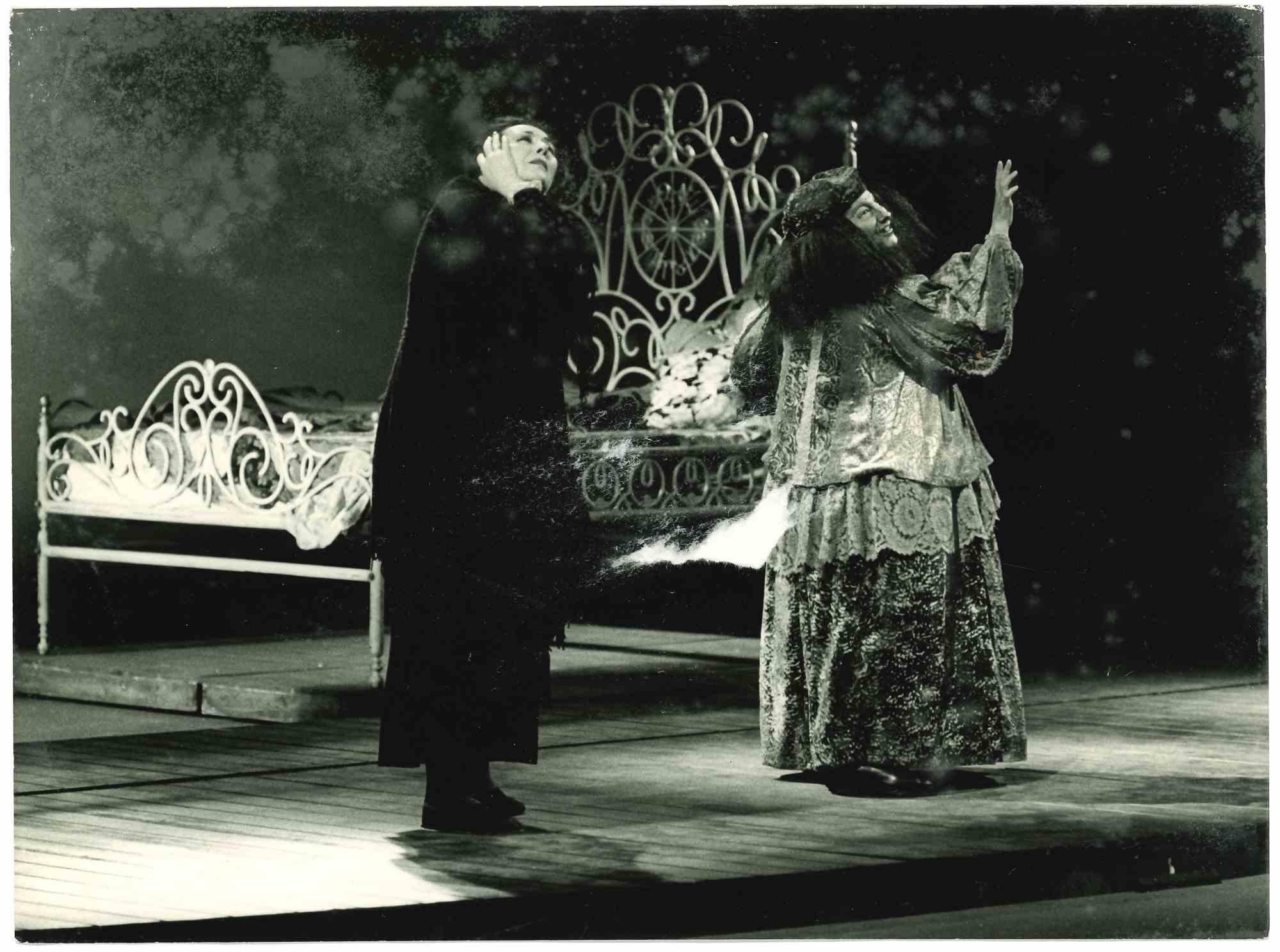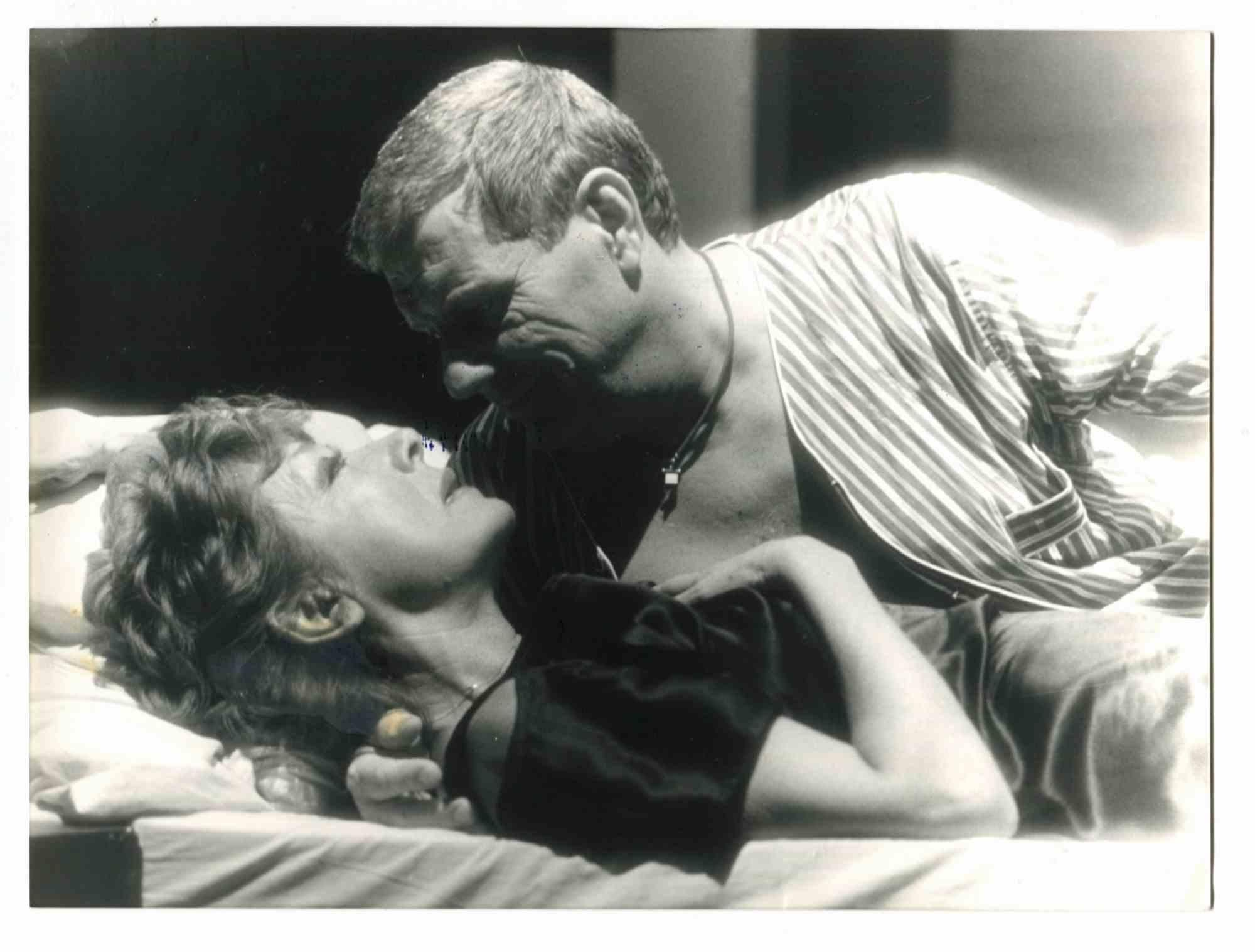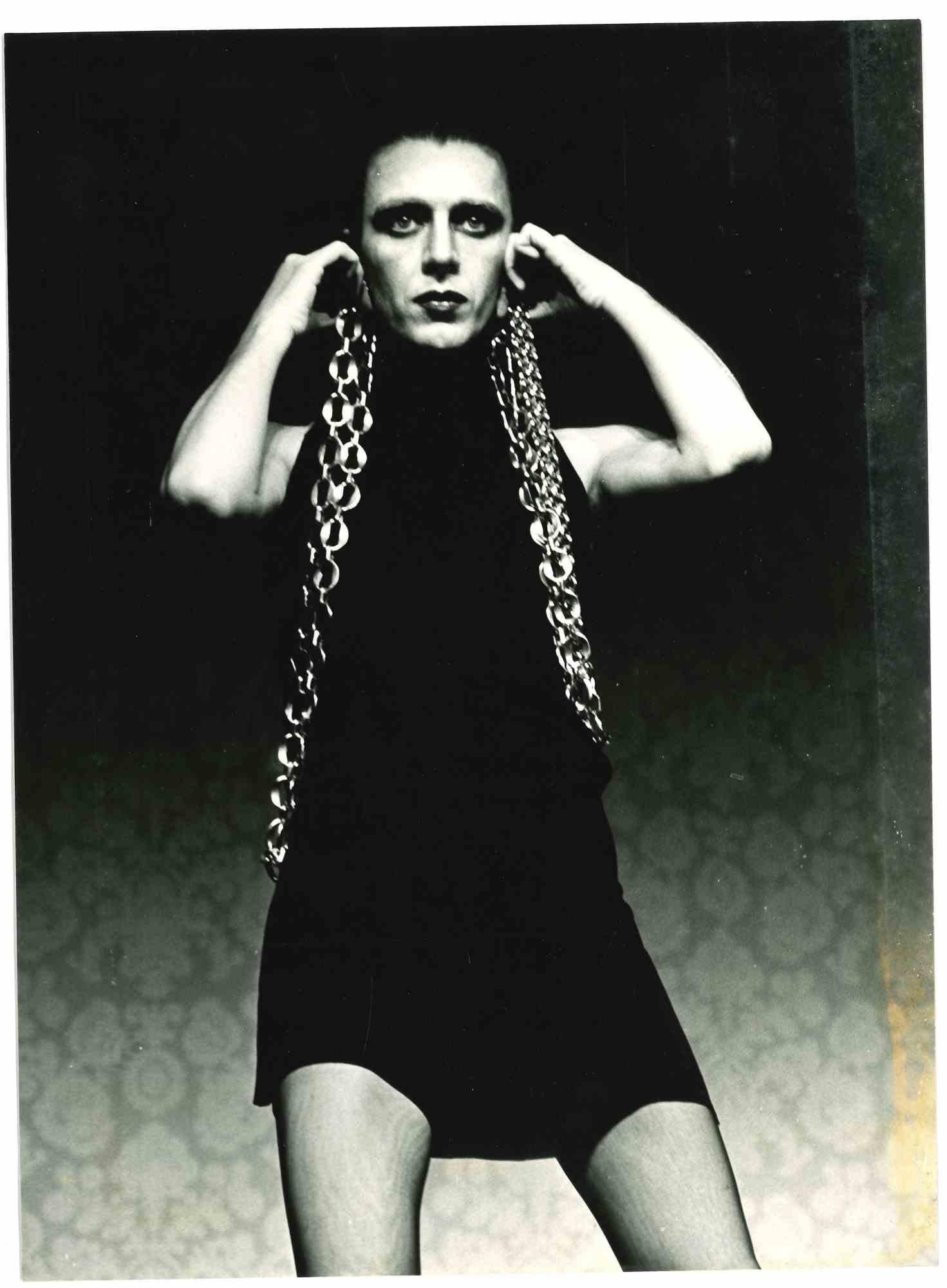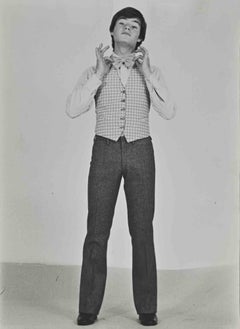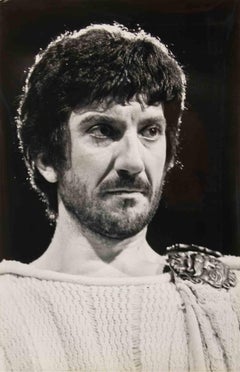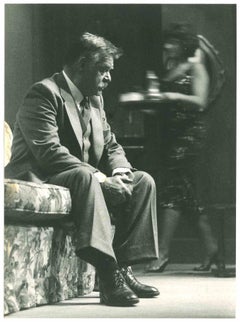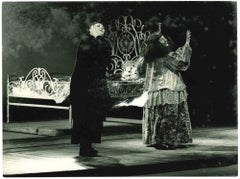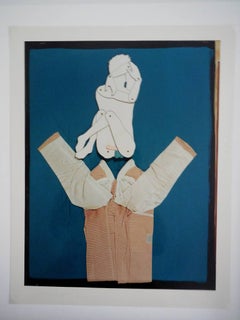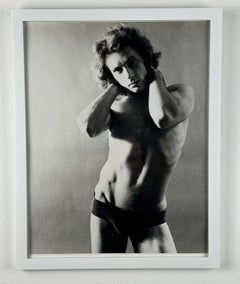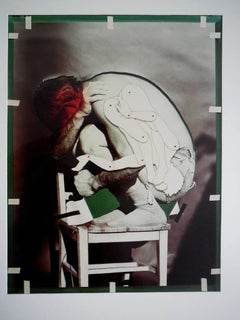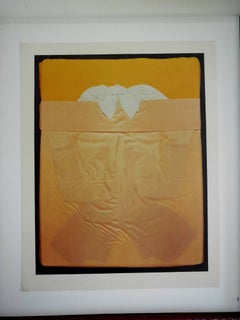Items Similar to Gigi Proietti - Vintage Photograph - 1970s
Want more images or videos?
Request additional images or videos from the seller
1 of 3
UnknownGigi Proietti - Vintage Photograph - 1970s1970s
1970s
$215.21
£159.32
€180
CA$297.80
A$328.32
CHF 171.76
MX$4,027.82
NOK 2,162.17
SEK 2,021.97
DKK 1,371.13
About the Item
Gigi Proietti is a black and white vintage photo, realized in 1970s.
The photo depicts the italian actor and showman, Luigi Proietti.
Good conditions and aged.
It belongs to a historical and nostalgic album including historical moments, places, families, artworks, royal families, and political events, to be meticulously captured on camera.
Copyright by Agenzia Giornalistica Italia, Rome
- Creation Year:1970s
- Dimensions:Height: 12.21 in (31 cm)Width: 7.88 in (20 cm)Depth: 0.04 in (1 mm)
- Medium:
- Movement & Style:
- Period:
- Framing:Framing Options Available
- Condition:Insurance may be requested by customers as additional service, contact us for more information.
- Gallery Location:Roma, IT
- Reference Number:Seller: T-1505551stDibs: LU650315117992
About the Seller
4.9
Platinum Seller
Premium sellers with a 4.7+ rating and 24-hour response times
1stDibs seller since 2017
7,688 sales on 1stDibs
Typical response time: 3 hours
- ShippingRetrieving quote...Shipping from: Grasse, France
- Return Policy
Authenticity Guarantee
In the unlikely event there’s an issue with an item’s authenticity, contact us within 1 year for a full refund. DetailsMoney-Back Guarantee
If your item is not as described, is damaged in transit, or does not arrive, contact us within 7 days for a full refund. Details24-Hour Cancellation
You have a 24-hour grace period in which to reconsider your purchase, with no questions asked.Vetted Professional Sellers
Our world-class sellers must adhere to strict standards for service and quality, maintaining the integrity of our listings.Price-Match Guarantee
If you find that a seller listed the same item for a lower price elsewhere, we’ll match it.Trusted Global Delivery
Our best-in-class carrier network provides specialized shipping options worldwide, including custom delivery.More From This Seller
View All"Giusva" Fioravanti - Vintage photo - 1970s
Located in Roma, IT
"Giusva" Fioravanti is a black and white vintage photo, realized in 1970s.
The photo depicts the neo-fascist terrorist, Giuseppe Valerio Fioravanti, known as "Giusva", when he did t...
Category
Mid-20th Century Contemporary Figurative Photography
Materials
Photographic Paper
Gigi Proietti - Vintage Photograph - 1970s
Located in Roma, IT
Gigi Proietti is a black and white vintage photo, realized in 1970s.
The photo depicts the italian actor and showman, Gigi Proietti.
Good conditions and aged.
It belongs to a hist...
Category
1970s Contemporary Figurative Photography
Materials
Photographic Paper
Carlo Hintermann - Vintage Photograph - 1970s
Located in Roma, IT
Carlo Hintermann is a vintage black and white photograph realized in 1970s.
Good conditions.
Category
1970s Contemporary Figurative Photography
Materials
Photographic Paper
Katia Angeloni - Vintage Photograph - 1980s
Located in Roma, IT
Katia Angeloni - Vintage Photograph is an original black and white photograph realized in 1980s.
Good conditions.
Category
1980s Contemporary Figurative Photography
Materials
Photographic Paper
Lauretta Masiero - Vintage Photo - 1970s
Located in Roma, IT
Lauretta Masiero a Portrait is a vintage black and white photograph realized in the 1970s.
Good conditions.
Category
1970s Contemporary Figurative Photography
Materials
Photographic Paper
Erio Masina - Vintage Photograph - 1970s
Located in Roma, IT
Erio Masina is a vintage black and white photograph realized in 1970s.
Good conditions.
Category
1970s Contemporary Figurative Photography
Materials
Photographic Paper
You May Also Like
Large Harry Bowers Vintage C Print Photograph From Ten Photographs Fashion Photo
By Harry Bowers
Located in Surfside, FL
HARRY BOWERS
T E N P H O T O G R A P H S
I DON'T LOOK FOR PHOTOGRAPHS I INVENT THEM
I recall my first meeting with Harry Bowers in California a few years ago. As he produced his large-scale prints, I was at first flabbergasted, not only by their size, but by their seamless perfection. Technique appeared to be everything but then technique as technique simply vanished. After the first moment, technique was no longer an issue, but rather a passageway to the imagery.
Suffice it to say about Harry Bowers' working style that he is an obsessive man. Trained as an engineer, he has turned that discipline to art. His lenses, equipment and darkroom, much of it exactingly manufactured by himself to answer certain needs, serve the desire of the artist to take photographic technique to its ultimate perfection in invisibility and transparency. I respect obsession in art, and particularly in photography, because obsession in photography passes beyond the easy, middle ground of image making to a more demanding, more difficult, yet more rewarding end. Bowers' obsession is to eliminate "photography as technique." No grain, no decisive moments, no journalism, or, seemingly, direct autobiographical endeavors appear in his work.
Bowers is an artist of synthesis who controls his environment if only in the studio exactly to his liking. The images he creates are formal structures, saucy stories on occasion, which may offer hints of a darker, more frightening sexuality, but what you see is the end product of an experiment in which nothing save the original insight perhaps is left to chance.
We seem fascinated with the idea of replication of reality in art. Popular painting frequently reproduces a scene "with the accuracy of a photograph," and photographs may "make you feel as though you were right there." The very invisibility of the photographic medium is important to Bowers, in that it allows him to maneuver his subject matter without concern for rendering it in an obvious art medium which would interfere with the nature of the materials he uses. The formal subtleties of Bowers' recent work are as delicious and ambiguous in their interrelationships as the best Cubist collages, yet while those collages always suggest their parts through edge and texture, these photographs present a structure through a surface purity.
Bowers' earlier works, for example, the Skirts I Have Known series, were formed of bits of clothing belonging to Bowers and his wife or found at local thrift shops. These works fused an elegance of pattern and texture, reminiscent of Miriam Shapiro...
Category
1980s Arte Povera Photography
Materials
Photographic Paper, C Print
1970s photo Male Model
Located in Wilton Manors, FL
Kenn Duncan (1928-1986). Male Model, ca. 1973. 11 x 14 inches; 12 x 15 inches framed.
From the estate of William Como, Editor in Chief, After Dark Magazine.
Kenneth Duncan was born September 22, 1928, in New Jersey. He began his career as a skater and then a dancer. After breaking his foot and taking a six-week course on photography at a YMCA, he became a photographer. Duncan worked as a principal photographer for After Dark and Dance Magazine. His photographs also regularly appeared in Vogue, Harper's Bazaar, Life, Time, and Newsweek. In addition, he photographed a score of Broadway shows, including Hair, Applause, The Elephant Man, and Sophisticated Ladies and many dance and Broadway stars including Chita...
Category
1970s American Realist Black and White Photography
Materials
Silver Gelatin
Rare Harry Bowers Vintage C Print Photograph From Ten Photographs Fashion Photo
By Harry Bowers
Located in Surfside, FL
HARRY BOWERS
T E N P H O T O G R A P H S
I DON'T LOOK FOR PHOTOGRAPHS I INVENT THEM
I recall my first meeting with Harry Bowers in California a few years ago. As he produc...
Category
1980s Photography
Materials
Photographic Paper
Rare Large Harry Bowers Vintage C Print Photograph Ten Photographs Fashion Photo
By Harry Bowers
Located in Surfside, FL
HARRY BOWERS
T E N P H O T O G R A P H S
I DON'T LOOK FOR PHOTOGRAPHS I INVENT THEM
I recall my first meeting with Harry Bowers in California a few years ago. As he produc...
Category
1980s Pop Art Photography
Materials
Photographic Paper
Rare Large Harry Bowers Vintage C Print Photograph Ten Photographs Fashion Photo
By Harry Bowers
Located in Surfside, FL
HARRY BOWERS
T E N P H O T O G R A P H S
I DON'T LOOK FOR PHOTOGRAPHS I INVENT THEM
I recall my first meeting with Harry Bowers in California a few years ago. As he produced his large-scale prints, I was at first flabbergasted, not only by their size, but by their seamless perfection. Technique appeared to be everything but then technique as technique simply vanished. After the first moment, technique was no longer an issue, but rather a passageway to the imagery.
Suffice it to say about Harry Bowers' working style that he is an obsessive man. Trained as an engineer, he has turned that discipline to art. His lenses, equipment and darkroom, much of it exactingly manufactured by himself to answer certain needs, serve the desire of the artist to take photographic technique to its ultimate perfection in invisibility and transparency. I respect obsession in art, and particularly in photography, because obsession in photography passes beyond the easy, middle ground of image making to a more demanding, more difficult, yet more rewarding end. Bowers' obsession is to eliminate "photography as technique." No grain, no decisive moments, no journalism, or, seemingly, direct autobiographical endeavors appear in his work.
Bowers is an artist of synthesis who controls his environment if only in the studio exactly to his liking. The images he creates are formal structures, saucy stories on occasion, which may offer hints of a darker, more frightening sexuality, but what you see is the end product of an experiment in which nothing save the original insight perhaps is left to chance.
We seem fascinated with the idea of replication of reality in art. Popular painting frequently reproduces a scene "with the accuracy of a photograph," and photographs may "make you feel as though you were right there." The very invisibility of the photographic medium is important to Bowers, in that it allows him to maneuver his subject matter without concern for rendering it in an obvious art medium which would interfere with the nature of the materials he uses. The formal subtleties of Bowers' recent work are as delicious and ambiguous in their interrelationships as the best Cubist collages, yet while those collages always suggest their parts through edge and texture, these photographs present a structure through a surface purity.
"I follow fashion. I have closets literally full of clothes. I am a full-blown Comme des Garçons and Prada freak. I love clothes themselves as objects, and I also love the glossies – my love of fashion is how I discovered Wallpaper magazine" Bowers' earlier works, for example, the Skirts I Have Known series, were formed of bits of clothing belonging to Bowers and his wife or found at local thrift shops. These works fused an elegance of pattern and texture, reminiscent of Miriam Shapiro...
Category
1980s Photography
Materials
Photographic Paper
Untitled (Figure #19)
By Robert Calafiore
Located in New York, NY
Pinhole camera Chromogenic print (Unique)
Signed and dated, verso
This artwork is offered by ClampArt, located in New York City.
Robert Calafiore employs a hand-built pinhole camer...
Category
2010s Contemporary Figurative Photography
Materials
C Print
More Ways To Browse
Henry Moore Signed
Painted Stained Glass Window
Hand Coloured Engravings
Japanese Print Animals
Unframed Antique Prints
Joan Miro Pencil Signed
Rome Prints
Japanese Prints Ukiyo E
Lithograph On Board
P Rolence
Female Surrealists Art
Japanese Prints 1950
Kandinsky And Prints
Antique Dutch Painting
Joan Miro Drawing
Life Size Dog
French Vintage Art Deco Print
Old Masters Venice
